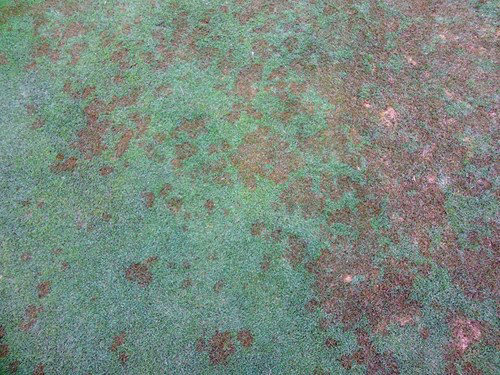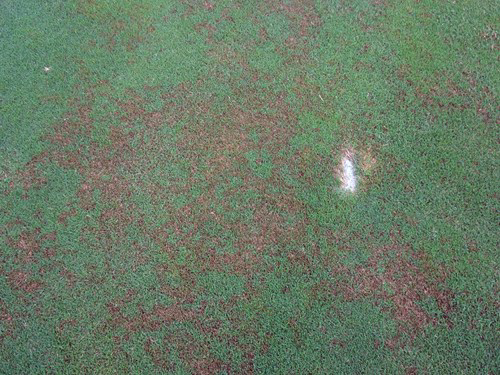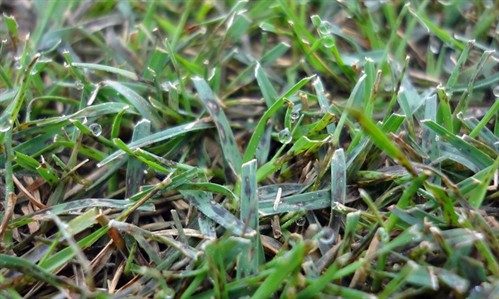The cool wet weather of spring and fall is ideal for the development of Helminthosporium leaf spot on couchgrass. The disease appears as small brownish spots normally 2 to 3 cm in diameter. The spots may coalesce forming large blighted areas.
The pathogens that may cause this disease were once grouped as Helmithosporium leaf, crown and root diseases (1). The pathogens that cause leaf, crown and root diseases on warm season turfgrasses like couchgrass are Bipolaris species (ex. B. cynodontis, B. spicifiera, and B. sorokiniana).
Cultural practices that may help reduce disease severity include fertilizing to promote moderate growth but not overstimulating growth, reducing thatch, increasing sunlight by removing or pruning trees if the turf is shaded, and proper irrigation. Herbicide applications including both pre-emergent and broadleaf weed chemicals during leaf spot activity may increase disease severity. There are several fungicides available for control.
Reference:
Smiley, R.W., P.H. Dernoeden, and B.B. Clark. 2005. Compendium of Turfgrass Diseases. The American Phytopathological Society. St. Paul, Minnesota.
Photograph 1. Leaf spot symptoms on an ultradwarf couchgrass putting green occurring during late winter in Florida. Symptoms are most obvious on the outer edges of the green where traffic wear from mowing is the greatest.

Photograph 2. The symptoms may progress from small brownish spots to medium size patches.

Photograph 3. This picture is a close-up of the leaf spot symptoms on couchgrass. Notice the lesion is a bleached or whitish center surrounded by a purplish border.

Acknowledgement:
The photographs were graciously provided by Darren Davis, CGCS, Olde Florida Golf Club, Naples, Florida.
